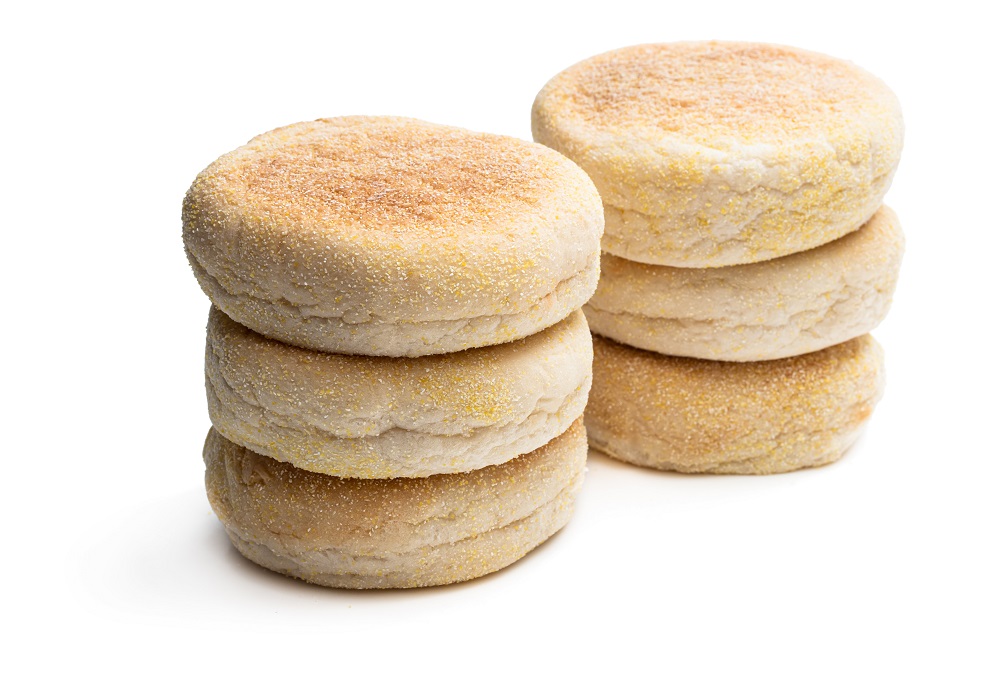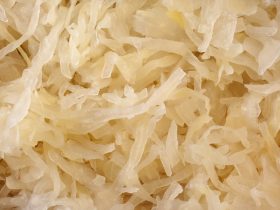A bread product much resembling that of a muffin top – hence the name-, English muffins are often enjoyed for breakfast in most parts of Europe and the U.S.A. These English muffins can be made from a wide variety of different grains, and topped with all sorts of sweet or savory ingredients.
Because of the small size of English muffins, most bakeries and stores sell them in large batches, and as such it is important to ensure that they are stored in the best possible way so as to reduce food waste and loss of quality over time.
Yes, English muffins can be frozen. Like most baked goods, English muffins can keep quite well in the freezer so long as they are insulated from factors such as freezer burn and high-moisture airflow, as these will damage their quality and accelerate their eventual spoilage.
What is the Ideal Temperature and Humidity for English Muffins?
Temperature and humidity present a unique challenge in the case of storing bread products, as a temperature that is far too low will cause the bread to grow staler if left unchecked.
Conversely, if the temperature and humidity are too high, it is likely that this will encourage the development of bacteria and fungi throughout the bread product, often presenting as mold and similar forms of microorganism cultures.

As such, it is best to store English muffins within the temperatures of 60°F and 80°F2, unless you choose to freeze them. As the ideal temperature of English muffins is approximately room temperature, it is a good idea to purchase a bread box or similar implement in order to insulate it from any temperature changes or insects.
On the humidity side of things, the ideal relative humidity for most bread products is approximately 60%, or the average humidity of some U.S. states. If your home presents a higher humidity than the recommended 60%, it is best to investigate other forms of storage for your English muffins.
How Long Do English Muffins Last in the Freezer?
English muffins stored on their own within the freezer will keep their top quality for up to three months, though it is possible they may last far longer than this period with a drop in textural quality.
It is important to note that this number applies to English muffins that are as of yet untoasted and have no excess ingredients apart from the traditional ones, as other organic ingredients like cream, butter or even fruit will accelerate their spoilage owing to their shorter shelf-lives causing a transfer of microorganisms.
Preparing to Freeze the English Muffins
In order to begin freezing your English muffins, it is important to prepare the appropriate equipment needed, as these items will ensure that the muffins are kept at their best quality for as long as possible.
You will need several resealable freezer bags or similar containers, a bread knife, and a freezer capable of reading temperatures as low as 32°F or the freezing temperature of water.
Apart from equipment you may need, it is also a good idea to make room in your freezer for the muffins, and to ensure that the items stored within do not crush or squash them.
Freezing the English Muffins
To begin freezing your English muffins, it is important to once again inspect them for any signs of mold or other kinds of spoilage. Ascertain that they have not already grown stale or have otherwise been exposed to moisture and temperature that may compromise their shelf-life within the freezer.
Once you are sure that the English muffins are good candidates for freezing, take your bread knife and slice them according to your future needs, as they will be more difficult to cut after freezing.
Now sliced to your desires, place the English muffins in several resealable bags. It is important to separate them by your desired serving size, as repeatedly removing the entire batch from the freezer before subsequently returning them will accelerate their spoilage and loss of quality.
Ideally, store one whole English muffin per resealable freezer bag. It is also wise to push out any excess air that may be within the bag as this will cause the muffin to grow stale more quickly.
After separating and packaging the English muffins, simply place them in the deepest part of your freezer away from any quickly moving sources of air or frozen products that may squash them.
Can English Muffins be Kept in the Refrigerator?
Yes, English muffins may be stored in the refrigerator, though certain precautions must be taken so as to preserve the English muffins at the best possible quality.
The first step to keeping the English muffins in your refrigerator is to set the temperature as low as possible. Most commercially available home refrigerators rest at an average temperature of 40° F, which is perfectly acceptable for storing English muffins, though they will benefit from even colder temperatures.
Inspect the English muffins for any signs of mold or spoilage, as the spores from these colonies can quickly contaminate the entire batch – or even your entire fridge- depending on how well the muffins are sealed away.
After ascertaining that the muffins are all still safe to eat, transfer them to an air-tight resealable plastic bag and push out as much air from inside as possible. The interaction between starch and amylopectin molecules in bread will cause it to become stale when exposed to humid air for too long a period3.
Place the bag of English muffins as far away from your crisper as possible, ideally at the highest section of your refrigerator. Ensure that they are kept away from any sources of moving air such as a vent or refrigerator fan. It is also advisable to keep the English muffins away from any source of light in the refrigerator.
How to Know if English Muffins have Gone Bad
Like all bread products, the most likely candidate behind the spoilage of your English muffins is likely certain strains of household fungi referred to as mold.
Green or other off-color patches along the surface of the muffin are usually a clear sign of this occurring. While it is technically possible to simply remove the part of the muffin that has been colonized, it is more advisable to simply dispose of the muffin itself.
Apart from visual indicators, English muffins may also develop an alcohol or yeast-like smell, indicating that they have been stored improperly and have been subjected to microorganism-encouraging moisture levels. It is best to dispose of these muffins or even the entire batch if they present a similar odor.
References
1. David, Elizabeth (1977). “English Bread and Yeast Cookery.” London: Allen Lane.
2. Unknown Author. (July 2019) “How long can I store bread?” United States Department of Agriculture AskUSDA https://ask.usda.gov/s/article/How-long-can-I-store-bread
3. McGee, Harold (2004). On Food and Cooking: The Science and Lore of the Kitchen (2nd ed.). New York: Scribner





Hi, I'm Dom
Dom Eats was started to help other people fall in love with food. While cooking can feel intimidating, it doesn't have to be.